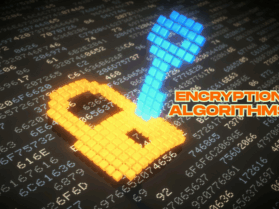Whether you work remotely, travel often, or love staying connected on the go, chances are you have used the widely available public Wi-Fi. These public Wi-Fi security risks are practically everywhere – hotels, airports, restaurants etc.
Public Wi-Fi networks are convenient, but they come with significant privacy and security risks. Many users rely on these networks for easy internet access. However, the convenience of public Wi-Fi often overshadows the potential dangers lurking behind unsecured connections.
Let’s glance at some of the most critical Wi-Fi security risks you should know.
Eavesdropping
One of the most significant public Wi-Fi security risks is eavesdropping. Hackers can easily intercept the data transmitted over an unsecured Wi-Fi network. This process, known as packet sniffing, allows attackers to capture sensitive information such as login credentials, credit card numbers, and personal messages. Since public Wi-Fi networks typically lack encryption, the data transmitted through them is often in plain text, making it an easy target for cybercriminals.
Man-in-the-Middle Attacks
Man-in-the-Middle (MitM) attacks are another prevalent public Wi-Fi security risk. In this type of attack, a hacker intercepts the communication between your device and the Wi-Fi router. By doing so, the attacker can alter the information being transmitted or steal sensitive data. MitM attacks are particularly dangerous because they can occur without the user's knowledge, compromising the security of online transactions and communications.
Rogue Hotspots
Rogue hotspots present another severe public Wi-Fi security risk. These are malicious networks set up by hackers to mimic legitimate public Wi-Fi networks. Unsuspecting users may connect to these rogue hotspots, thinking they are connecting to a safe, official network. Once connected, the attacker can monitor all the traffic that passes through the rogue network, capturing sensitive information and potentially installing malware on the user's device.
Malware Distribution
Public Wi-Fi networks can also be a breeding ground for malware. Hackers often exploit vulnerabilities in public Wi-Fi networks to distribute malicious software. When users connect to an infected network, their devices can automatically download malware, which can then steal data, monitor activities, or even take control of the device. This public Wi-Fi security risk highlights the importance of using updated security software and being cautious about the networks you connect to.
Data Theft
Data theft is a major concern associated with public Wi-Fi security risks. Cybercriminals can use various methods to steal data from users connected to public networks. This stolen data can include personal identification information, financial details, and confidential business information. Once obtained, this data can be used for identity theft, financial fraud, or sold on the dark web.
Session Hijacking
Session hijacking is another public Wi-Fi security risk that users need to be aware of. In a session hijacking attack, the hacker steals the user's session cookie, which can be used to impersonate the user on various websites. This type of attack is particularly dangerous for users who access sensitive accounts, such as online banking or email, over public Wi-Fi networks. The attacker can gain unauthorized access to these accounts and potentially cause significant harm.
Lack of Encryption
Many public Wi-Fi networks do not use encryption, or they use weak encryption methods. This lack of encryption is a significant public Wi-Fi security risk because it allows data to be transmitted in plain text. Without encryption, any data sent or received over the network is vulnerable to interception by hackers. Users should ensure that any public Wi-Fi network they connect to uses strong encryption protocols, such as WPA3, to protect their data.
Protecting Yourself
To mitigate the public Wi-Fi security risks, users should take several precautions. Always use a Virtual Private Network (VPN) when connecting to public Wi-Fi. A VPN encrypts your internet connection, making it difficult for hackers to intercept your data. Additionally, avoid accessing sensitive accounts or conducting financial transactions over public Wi-Fi. Keeping your devices updated with the latest security patches and using robust antivirus software can also help protect against malware and other threats.
Conclusion:
While public Wi-Fi networks offer convenience, they come with significant public Wi-Fi security risks. By understanding these risks and taking appropriate precautions, users can protect their privacy and maintain their online security. Always stay vigilant and prioritize your security when using public Wi-Fi.
Also Read: How do VPNs (Virtual Private Networks) enhance online privacy and security?





